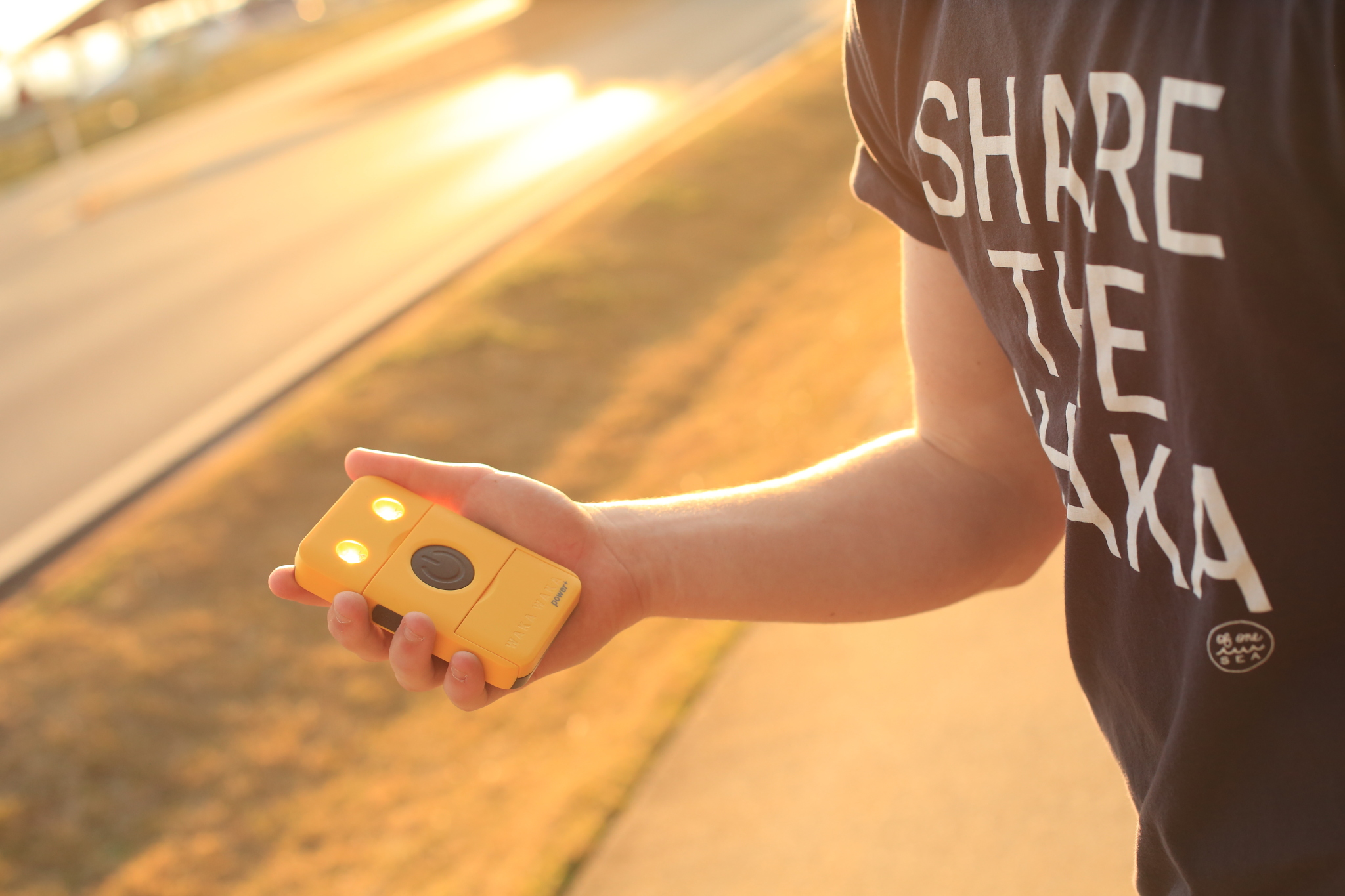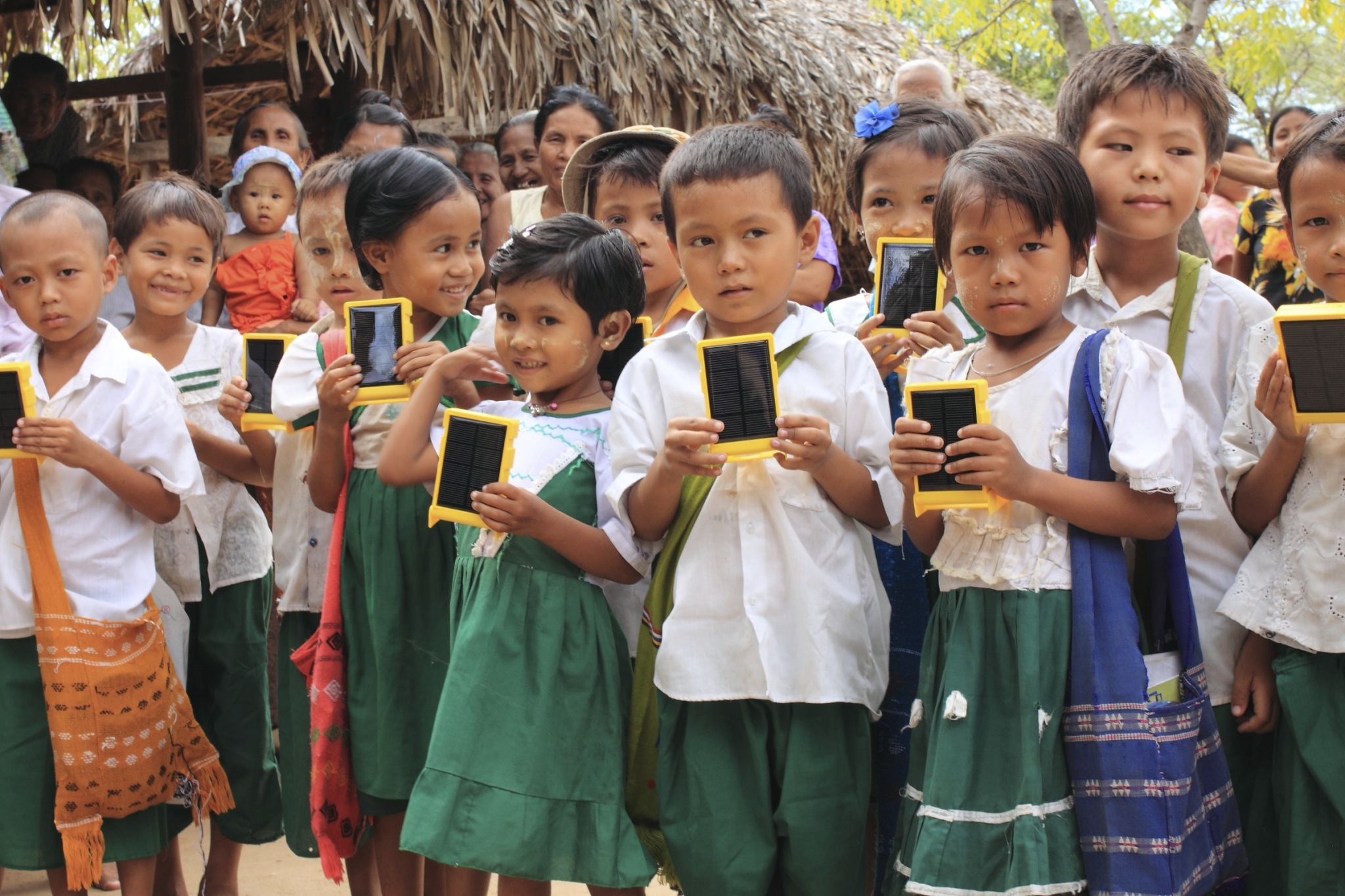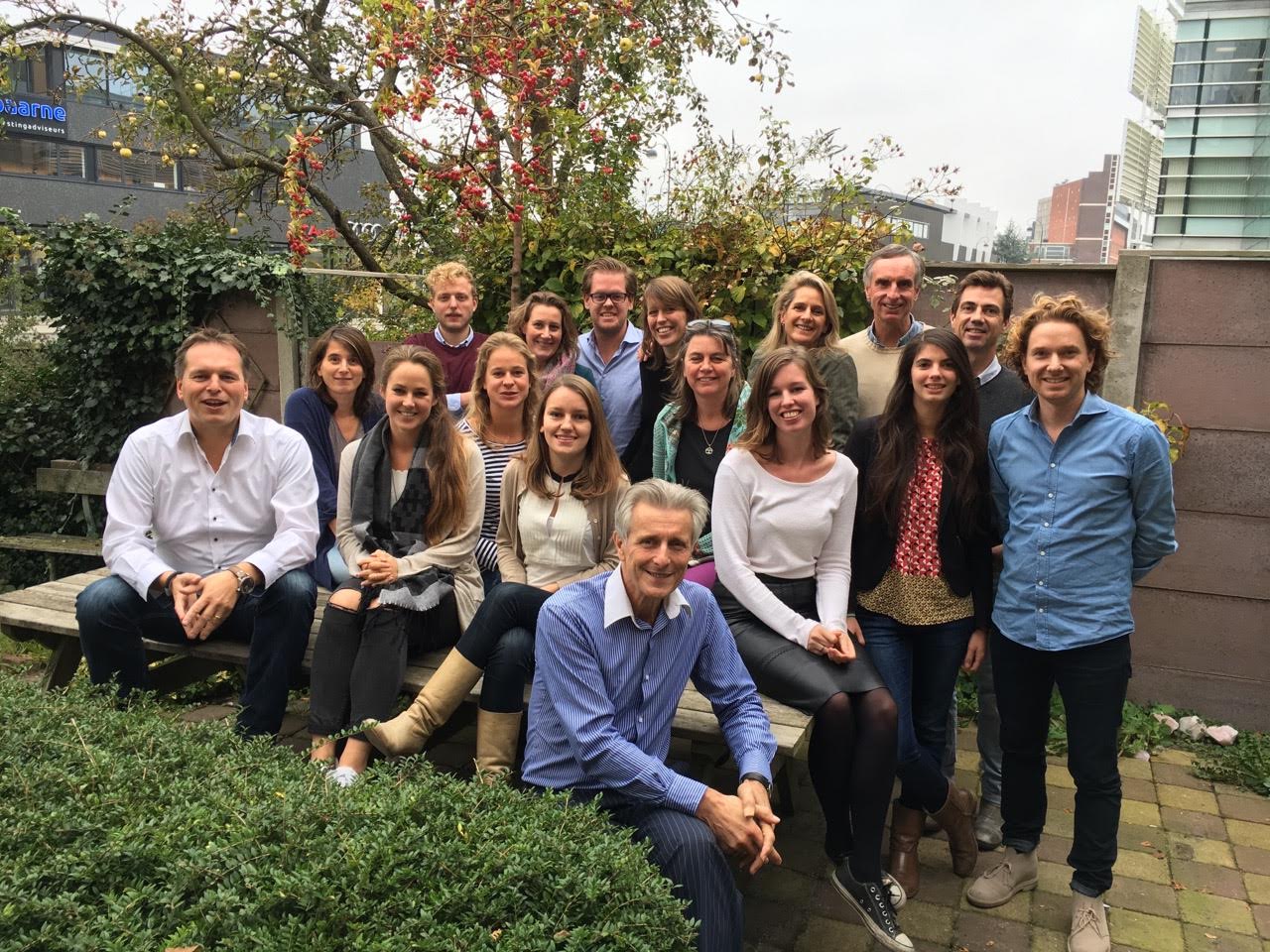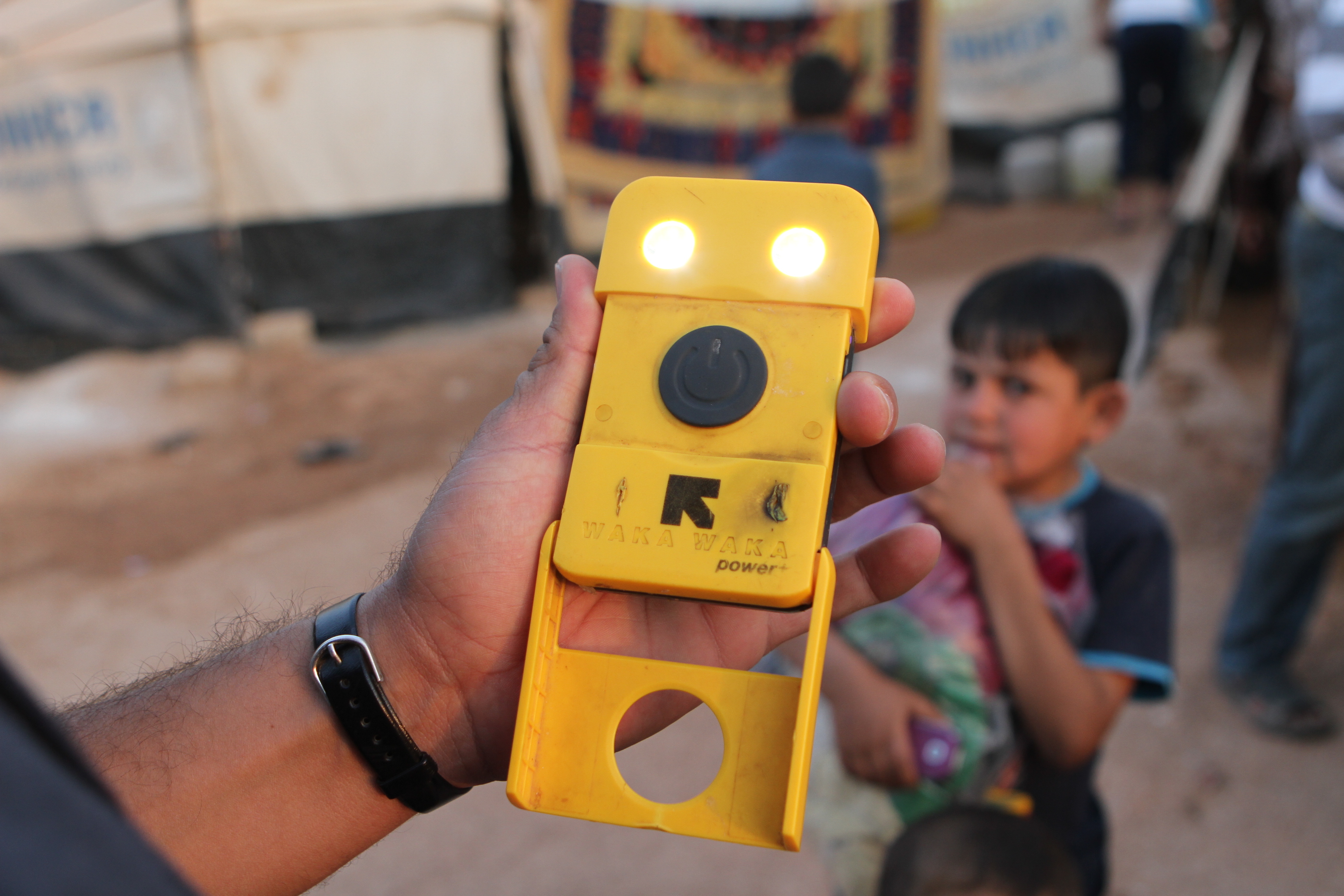I had the pleasure to speak with Camille Van Gestel, the co-founder and CEO of WakaWaka, a global social enterprise that develops and sells portable solar products. Impakter is familiar with the great work that WakaWaka does, but this time we had the opportunity to talk about the company’s evolution, its future and the challenges and possibilities of a world powered by sustainable energy. Here are highlights of our conversation.
Impakter: Hi Camille. Thank you for agreeing to speak with us. Let’s start with your personal background. How did you get to where you are at WakaWaka?
Camille Van Gestel: Back when I was 17, I had written a thesis about what was then called “the greenhouse effect.” I had read about it and realized it was one of the major issues for my generation and a problem that needed to be solved. So at the age of 17 I had basically decided that I wanted to be the person to singlehandedly undo the greenhouse effect. A modest ambition. But then came Al Gore, and he stole my job. I have to admit, no one could have done a better job at it then he did. He’s one of my heroes.
Fast-forward to 2010, the FIFA World Cup was happening in South Africa and I was traveling through the country with my friend and future WakaWaka co-founder Maurits Groen (future number one in sustainability index in the Netherlands). We were lobbying for an idea I had to mitigate the carbon emissions of the entire World Cup, which had the largest carbon foot print of any sporting event in human history (due to the long-haul flights). We proposed an idea to switch millions of incandescent lights to LED lights (from Lemnis Lighting in the Netherlands) throughout the country, so that we could donate the carbon credit we produced to the South African government so as to mitigate the carbon emissions over a time period of 20 years. We won the pitch, and that project is still running. But in the process of traveling from office to restaurant to hotel to find suitable flagship projects, we skipped the townships because they just weren’t officially connected to the electrical grid.
That’s where this little seed was planted in both Maurits and me. We looked at each other and said that something needed to change, that we needed to do something about this problem of energy poverty, but what? We knew we certainly weren’t going to start a LED lighting company… And then less than a year later, we found ourselves doing exactly that, making solar powered LED lights. That came together when I met an old friend, who was the co-founder of a Dutch tech company called Intivation. They make very small chips with patented software on it, which makes small solar applications hyper efficient.
 In the Photo: the WakaWaka Power+ solar charger, Photo Credit: WakaWaka
In the Photo: the WakaWaka Power+ solar charger, Photo Credit: WakaWaka
So somehow everything fell together, the inspiration and the technology to execute it?
C.V.G: As most ideas, the inspiration for WakaWaka came while I was having a beer with my old friend Frans Biegstraaten from Intivation in a bar in Hong Kong. I hadn’t even finished the beer when he told me about their technology, a hyper efficient solar lamp, that could fit in a bottle. I immediately called my friend Maurits and said “remember the conversation in South Africa, well do you want to start a company and take this technology to rural Africa? By the way, do you want to propose this idea to your friend Al Gore and ask him to be an ambassador for our non-existing future product?” In a split second he said yes, basically saying that if we do this together, he would open his network and we’d make the world a more ‘enlightened’ place.
Related article: WAKAWAKA- SHINING A LIGHT ON ENERGY POVERTY
Nice pun. So, what is WakaWaka and what is your mission/vision?
C.V.G: One of the reasons we started this company was to do something about climate disruption. More than 50 percent of carbon emissions from domestic lighting worldwide are caused by kerosene lamps. One kerosene lamp per household in Africa and the 40 to 60 average light bulbs per household throughout the developed world emit around the same amount of carbon! This is ridiculous. We wanted to do something about this. While LEDs are making their way into households in the developed world, in off-grid areas people are still left in the dark, and live like we did over a hundred years ago. So, that was the reason why we wanted to create a product that could bring light and mitigate carbon emissions.
Kerosene lamps are expensive, some families spend up to 20-25 percent of their disposable income on the fuel for these lamps. In fact a kilowatt per hour equivalent of light output in Africa based on kerosene usage is 200 times more expensive than it is for us in Europe or North America. Now that we are starting our fifth year, we have our own research where we’ve seen disposable income levels increase by 40 to 50 percent once families receive this light, because it extends their day. They have 3-4 hours extra in the day which they can spend on working longer in the fields during the day or making handicrafts in the evening for example, which they can then sell. And that has a tremendous impact on income levels. So, overall they save emissions and money on lighting, make more money because their day is longer and their children have better school results. All just because of light, which we in the developed world take for granted!
We want to be able to start a company, produce a product to solve a problem, and run an operation that can sustain itself within a world that can sustain itself.
 Photo Credit: WakaWaka
Photo Credit: WakaWaka
That’s impressive. So, what does sustainability mean for you, and to what extent is WakaWaka sustainable?
C.V.G: I appreciate the question very much, because the way we understand sustainability may be different from the way other people understand it. What we mean with sustainable is how the word was meant. We want to be able to start a company, produce a product to solve a problem, and run an operation that can sustain itself within a world that can sustain itself. It’s called “one planet thinking”. If what we use as a company can be regenerated by the planet it means that we can keep on doing it. Currently our modern-day society consumes approximately. 1.4x what the planet can regenerate, so we are running out of resources, faster and faster. Moreover, our business model is also a sustainable one. We have deliberately chosen a for profit model instead of a nonprofit, because we wanted our company to be sustainable in a business sense as well.
Our WakaWaka lights will last 4-6 years. The solar panels and the LED’s all have a 25-year+ life span but with the battery (which has a limited number of charge cycles) our product can last on average 4-6 years.
Furthermore, we are building a system where we take back our old/used products and give consumers a discount when they want to buy a new one. That way we give an incentive to bring back our used lights and chargers. What we’ll be doing then is to try and refurnish the old product with a new battery, clean it up or whatever is necessary (within limits) to turn it in into a second-hand product and sell it at a reduced price.
In fact, we’ve brought in a new CTO, Andy Hall, a specialist on Circular Economy who is helping us develop these methods so we can enter the circular economy. This also goes for the materials we use. We are currently testing products made by DSM, a completely cradle-to-cradle certified material, that is much better than post-industrial recycled plastic which we use now. This material can be broken down to a molecular level and then used again.
You mentioned a transition to a new material. Is technological innovation of this kind happening very quickly in your sector or is it not happening quickly enough?
C.V.G: It’s happening quickly, and not quickly enough. In laboratories, it’s already possible to achieve a 70 percent efficiency on a solar panel. This is already 3 times as high as the top performers right now. Imagine a solar panel generating three times as much energy as it does today. Already in many parts of the world, solar is cheaper than fossil. In many parts of the world it costs 4-5 cents/kWh where as normal electricity is 15-18-20 cents. Imagine what happens if it becomes 3 times more efficient.
That is going to happen but it may take up to 10 years for that technology to be industrialized and ready for production. We need to look at what’s possible with the currently available technology. And at WakaWaka we are doing that. We are using the best technology out there. I’ll give you an example, we are using solar panels from SunPower which is a California based company. Their solar panels are 24 percent efficient which is the highest efficiency for a mass produced solar panel. There is a chemical company in the Netherlands called DSM, they are the most sustainable chemical company registered on the Dow Jones Index, and they’ve created a thin film, a light trapping foil. We are going to use that foil and paste it on our solar panels which will help us achieve 10 percent additional efficiency, especially in low light conditions. So, we use the best of what’s available, even if it comes in relatively small increments in order to stay on the front lines of innovation.
 In the Photo: the WakaWaka team at their Haarlem headquarters in the Netherlands, Photo Credit: WakaWaka
In the Photo: the WakaWaka team at their Haarlem headquarters in the Netherlands, Photo Credit: WakaWaka
What would you say is the main reason why these technologies can’t go from the lab to the marketplace quickly enough?
C.V.G: It takes time for any new technology to industrialize. There were solar panels available in the 60s and 70s but they were terribly expensive. Only when scale came into play did the price drop 50 percent and did so every year! So, these laboratory panels of course can be manufactured, but they’re probably going to cost a thousand dollars or more per watt which is more than a thousand times more expensive than the current price. So as long as it’s not economically viable it won’t reach an industrialization phase, and it takes time to make the production process efficient.
Obviously, we are living a fast changing political landscape. My world view was challenged this year…
C.V.G: …last week you mean…
Exactly, I’m still not over it. So, with all these changes in the political landscape are you still confident that overall we are heading towards the right direction in terms of sustainability, despite setbacks?
C.V.G: I have by nature a very positive attitude towards the world and the things that we do. There’s two ways to look at the fact that we are going to have a president in the US who doesn’t acknowledge climate disruption. He may become responsible for slowing down the process in the United States, on the other hand the renewable energy sector is already quite a large industry. Also, there is a huge number of people, at least the people who voted for the other candidate, that are convinced of the opposite. So, with a president who is so outspoken and in denial about climate change, it should and I think it will empower and ignite the people who know for a fact this change is necessary. I hope that this will have a positive effect on sustainable developments and sustainable investments.
The interesting thing is that you can already see it in Marrakech, at COP 22, the follow up meeting to last year’s Climate Change Agreement: It is the US delegation that is now pushing the hardest to get decisions through. These are the kind of people who feel a sense of urgency as a result of this counter force. Already we see sustainable developments accelerate throughout the world. This momentum cannot be stopped any more, not even by a US President.
If you had all the prime ministers and presidents of major countries in one room and you could dictate at least one environmental policy, what would you tell them?
C.V.G: Get rid of all import duties on renewable energy solutions. **there are still those?** They’re ridiculous. In India, we are paying more than 20 percent duties on solar products that are being imported. It’s a protectionist measure and its slowing down the development of solar because if domestic production were challenged by international companies, development would be faster. In east Africa they are even subsidizing kerosene, because the population needs it and it’s too expensive. But that means they are penalizing solar and “clean” solutions. Even in the US, renewable products, like solar products from China for example, are charged heavily with import duties as part of a trade war between these two countries.
I understand governments want to protect their national industries, but renewable energy solutions need to be as affordable as possible to win the carbon war. It’s criminal towards future generations in my opinion to impose any measures to slow down this development.
Related article: SDG 7: AFFORDABLE AND CLEAN ENERGY FOR ALL – YOUTH LIGHTING UP THE WORLD
Back to WakaWaka, which product is your bestseller and what are the reasons behind its growth.
C.V.G: We currently have three main products, but we are expanding the portfolio next year. The bestseller is the solar phone charger and light, the WakaWaka Power+, because it can charge your phone and actually looks like a smart phone. We really wanted to create the best technology has to offer for people who live on just 2 dollars a day, and we were able to pull it off. We call this “Safe Sustainable Solar For All.” We should not distinguish between one customer and another, they all deserve the same quality. It looks at you, it smiles at you, it has a nice bright yellow color, and WakaWaka is a catchy name. It means shine bright in Swahili. You know who came up with the name? (Points to a picture of his wife Esther in the background.)
One kerosene lamp per household in Africa and the 40 to 60 average light bulbs per household throughout the developed world emit around the same amount of carbon.
 In the Photo: WakaWaka Power+ solar charger in use , Photo Credit: WakaWaka
In the Photo: WakaWaka Power+ solar charger in use , Photo Credit: WakaWaka
You mentioned before you’ve got new products coming out, tell us more about these.
C.V.G: We’re basically extending our product portfolio. We’ll have separate solar panels which can directly charge your mobile phone, a 10-watt solar panel which can supercharge your WakaWaka Power maybe within two hours in the sun. Later next year, we’re also going to introduce a Bluetooth connected WakaWaka so that it communicates with your phone. This way we can see what we are generating with the entire community and what impact we’re making in real time at any given moment. Something I’d really like to see is if you had a WakaWaka that allowed other users to contact you. That way you’d be able to speak to someone in Rwanda who is also using one and through this community you would exchange experiences and get to know each other. After all, we are one big human family.
So, what would be a long-term vision for WakaWaka? Powering houses? Whole infrastructures?
C.V.G: The big picture is basically summed up in “safe sustainable solar for all.” That’s our purpose first and foremost. Yes, we will see the product range expand, and products will get larger with more capacity etcetera. But whilst a lot of companies are focused on middle class consumers that can afford a solar home system, we also focus on the people who earn less than two dollars a day. We believe that we need to start there, and take them up the energy escalator.
That is really key to our core purpose. Safe, sustainable solar for all means “for all.” We do not exclude anybody. So, if you look at the big picture, where do we want to end up? A world which is kerosene lamp free, where people do not need to use candles or toxic kerosene lamps anymore. I know that this is a goal that seems almost inconceivable since we are talking about people some of whom barely have any disposable income and live in extremely remote areas. But we see it as a challenge and an adventure: to come up with ways to give them access to light and power through an inclusive model where they are able to participate and not just be beneficiaries of donations.
The end goal is everybody has access to safe sustainable solar.
In the Photo: WakaWaka team in Rwanda, Photo Credit: WakaWaka
Is there anything you would like to share with us?
C.V.G: As a matter of fact, yes. WakaWaka made an incredible start thanks to a very active and engaged community. We call them (and ourselves) Agents of Light. We have done numerous successful crowdfunding campaigns and we are currently in our tenth one! A special one, since people can now become a shareholder in our adventure when they choose to invest.
The campaign is a success already with 150 percent raised of our goal, but we have a few days left in the campaign and we’re welcoming new investors who want to be part of WakaWaka’s mission and success. People can go to OnePlanetCrowd when they, like us, believe that the world is need of light and can help us create impact.
Recommended reading: “SDG 7: HOW TO SCALE UP SUSTAINABLE ENERGY”
_ _














